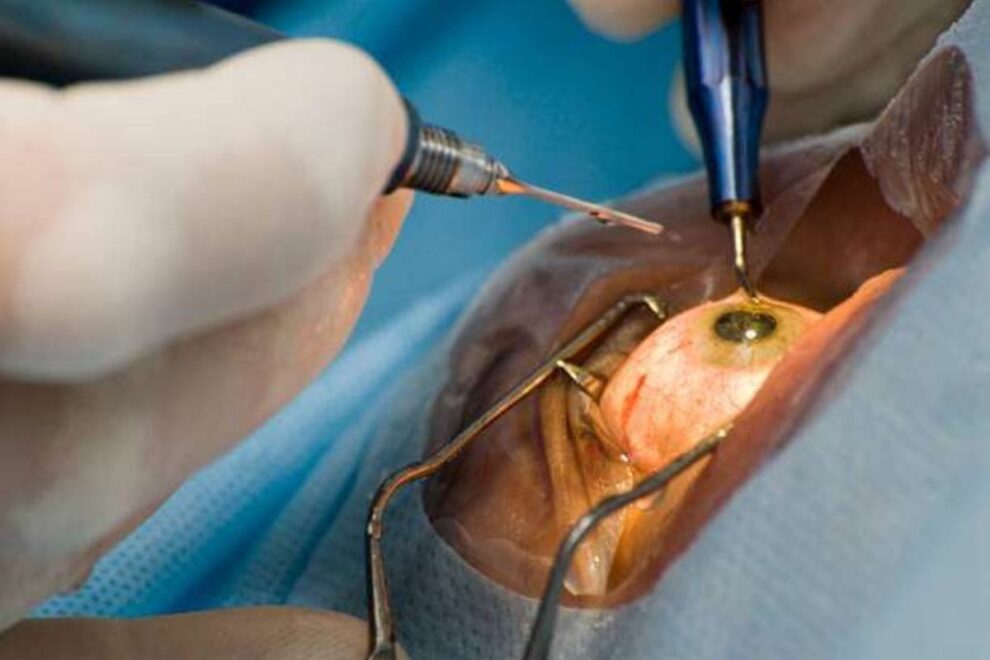Laser Peripheral Iridotomy Treatment in India | Effective Glaucoma Treatment
Leading eye hospitals in cities like Delhi, Mumbai, and Bangalore provide advanced glaucoma treatments at a fraction of the cost compared to Western countries. The procedure is quick, non-invasive, and typically performed on an outpatient basis with minimal recovery time.


Free Doctor Opinion

Personalized care with a warm interaction with the patient
- Achieving outstanding success rates through our dedicated care approach.
- Equipped with the latest technology to ensure optimal treatment outcomes.
- Our expert team provides exceptional healthcare with experience.
- Offering 24/7 assistance for your health needs and concerns.
- Providing quality treatment at reasonable costs for every patient.
- Contact us Email ID:[email protected]
- Call us: +91 9029304141
What is the procedure for the LPI?
Laser peripheral iridotomy is a procedure performed using the light energy of a laser to open a small hole in the colored portion of the eye called the iris, therefore allowing the fluid to drain from the back of the eye toward the drainage area in front of the iris. It is meant to prevent high-pressure glaucoma.
THE EYE MECHANISM FOR MAINTAINING PRESSURE
The eye must maintain a fluid pressure to function properly. The fluid is produced in an area behind the colored part of the eye, the iris, and must travel through the pupil. It then must drain out in an area usually hidden from our view where the edge of the iris meets the white part of the eye, the sclera. This area of drainage is called the angle. If there is very little space between the iris and the sclera, in other words the angle is very narrow, there is a risk that this drainage area could close off preventing the fluid from draining out of the eyes. Should this happen the pressure in the eye would go quite high and produce what’s called angle closure glaucoma.
REASON FOR LASER PERIPHERAL IRIDOTOMY
Some people have narrow angles, which indicate that they are in danger of this angle closing. Other people have angles so narrow that they are partially closed off, and yet other people are completely closed off. All these people would benefit from having an alternate route for the fluid to get from behind the iris to the drainage sites. It used to be that this required going to the operating room and cutting a small hole in the iris under anesthesia. With the advent of the laser, the light energy can be used to open a small hole in the iris and provide access to the drainage site.
LASER PROCEDURE IN INDIA
After applying a drop of anesthetic to your eye, you will be seated at the laser. A contact lens would be applied to your eye and the laser focused on the thinnest portion of the iris. I usually try for the superior portion which is hidden up under the lid. Each pulse of the laser does provide a small amount of discomfort for many people. However, this is almost always very minor and well tolerated. We often use two different kinds of lasers and we try to make a small but sufficient hole to allow drainage of the fluid from the back to the front. It should be stated that this hole does not go from outside the eye to inside the eye but only open up a very small portion of the iris itself. Usually we give drops before the procedure and after the procedure and check the pressure both before and after.
RISKS AND ALTERNATIVES
With an procedure there is always a chance that something could go wrong, even with a procedure as well tolerated as a laser peripheral iridotomy. The pressure in the eye could go up despite the fact that we give drops to help control this. The iris is richly invested with blood vessels and a very small amount of bleeding often occurs but it is almost always insignificant and disappears quickly. Whenever we work around the eye, we always have to say that there is a risk of loss of vision in case something untoward happens. This risk is very small and I would not recommend you to have this procedure if I did not think the benefits far outweighed the risks. If is also possible that over time, the hole can close off because the back layer of the iris can slide over the front layer. Therefore, we need to follow you to assure patency over time. As an alternative to the laser, it is possible to take a drop to constrict the pupil; however, this requires administration four times a day and cannot be missed as the pupil could then dilate during that time and close off the angle. In general, this is not a good alternative for long-term therapy. If you have any further questions regarding this procedure, please feel free to ask at any time.
Want to know about the Treatment hospitals in India? Take a free second opinion – click here Or email at [email protected] / Call +91 9029304141
Read Also :-
- IVF Cost in Delhi – Affordable Fertility Treatments & Leading Clinics
- Fertility Treatment in India – Advanced IVF, IUI, and Surrogacy Solutions
- Mosaicplasty Surgery in India: Advanced Treatment for Cartilage Repair
- Neonatal Surgery in India – Expert Care for Newborns
- MVR Surgery in India – Advanced Mitral Valve Replacement for Heart Health
- Laser Iridotomy Surgery in India | Effective Treatment for Glaucoma
Committed To Build Positive, Safe, Patient Focused Care.
High Quality
Care
Home Review
Medicine
All Advanced
Equipment
Book An Appointment

At We Care India, we offer complete medical services for your entire family, from routine check-ups to injury care, ensuring personalized attention and expert assistance for all your health needs.


